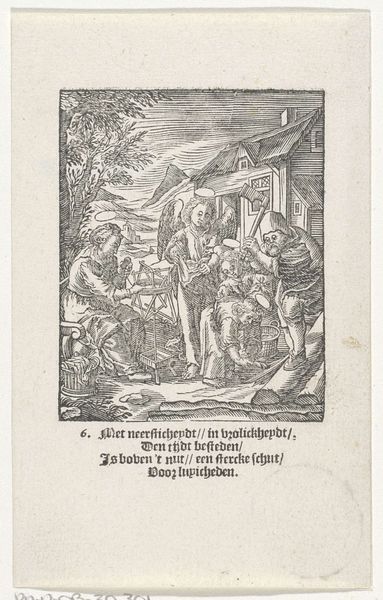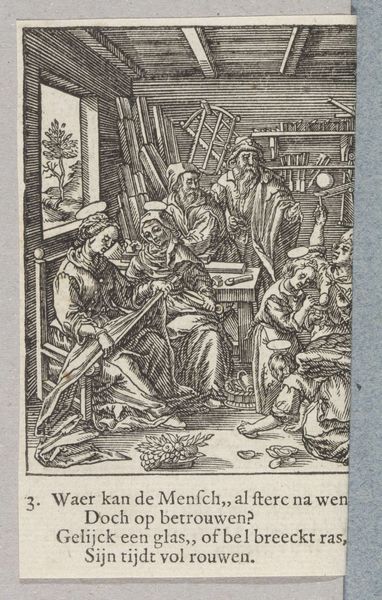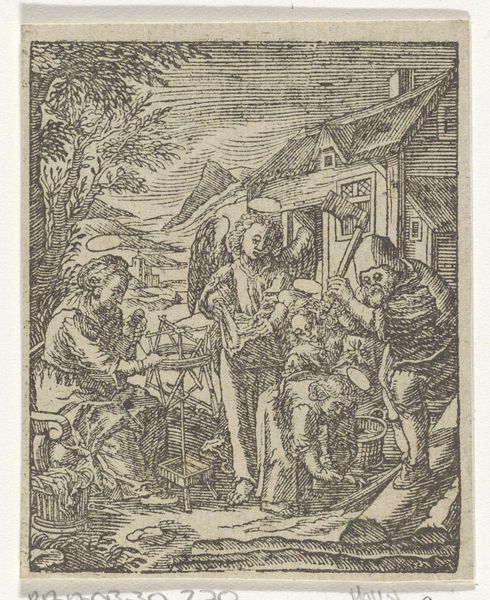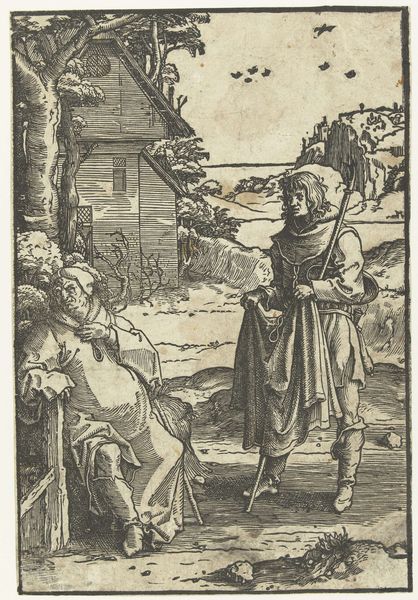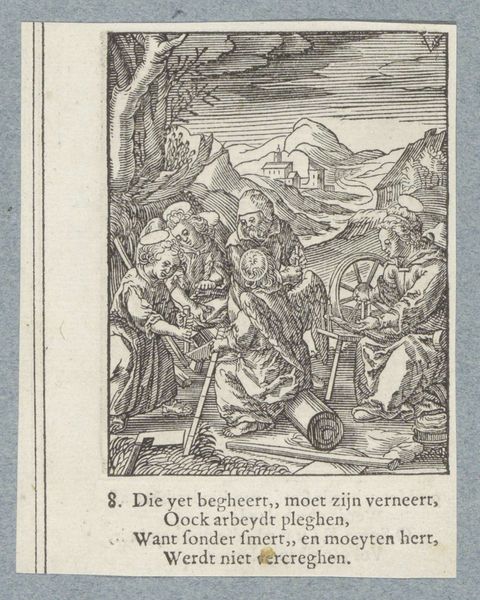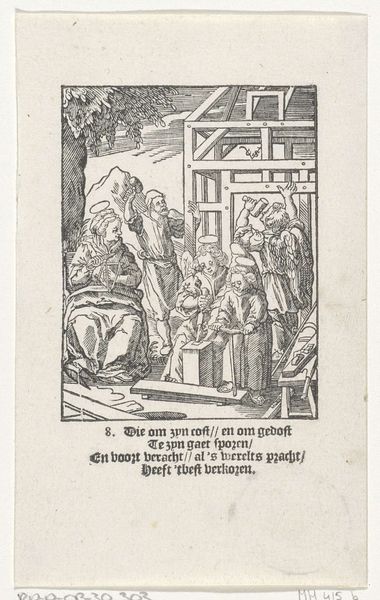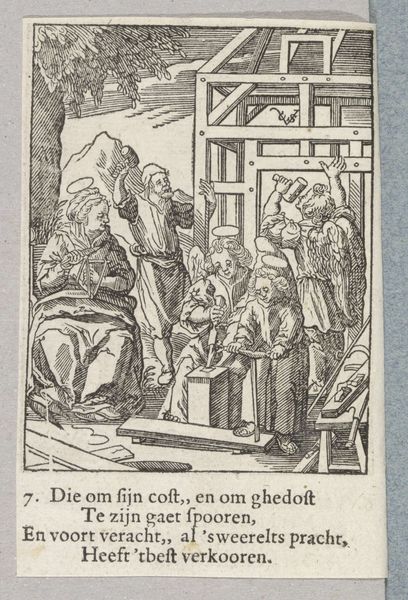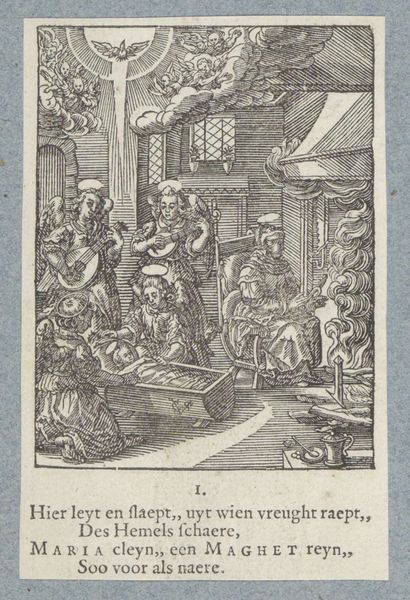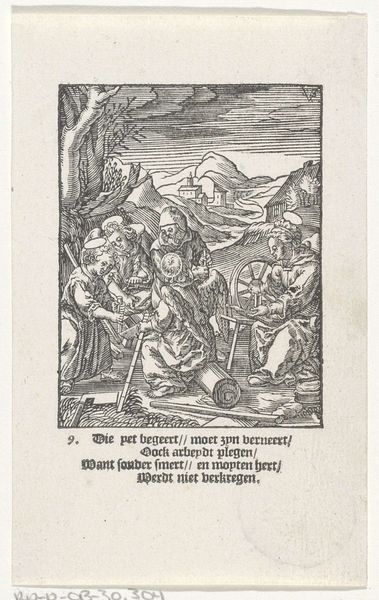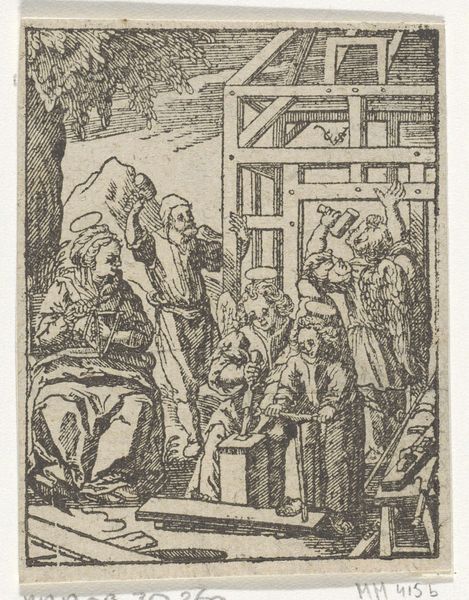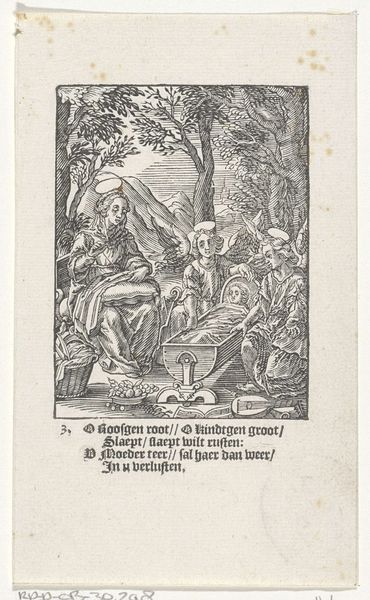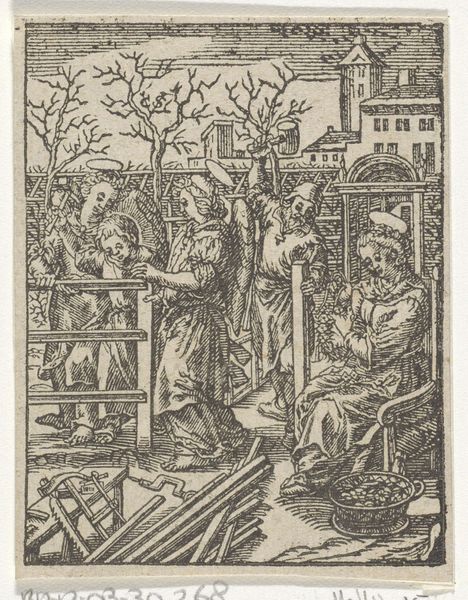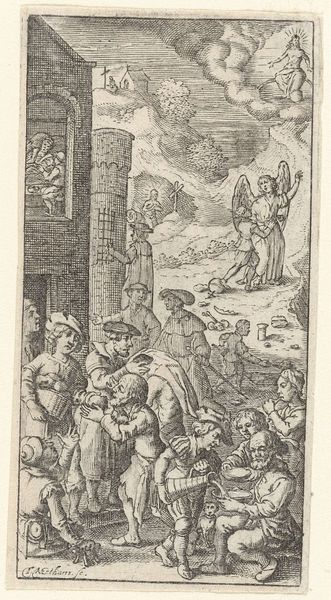
print, engraving
#
narrative-art
# print
#
line
#
northern-renaissance
#
engraving
Dimensions: height 80 mm, width 64 mm, height 99 mm, width 80 mm
Copyright: Rijks Museum: Open Domain
This small woodcut, made by Christoffel van Sichem II, now resides in the Rijksmuseum. Its detailed imagery offers a glimpse into the social values of the Dutch Republic during the 17th century. The print depicts the Christ Child, surrounded by ordinary people engaged in labor: sawing wood, spinning yarn, and gathering wood chips. This wasn't just a scene of religious devotion; it reflected the Protestant work ethic that was taking root. The Dutch Republic was becoming a global commercial power, and the virtues of hard work and industriousness were increasingly celebrated. Look at the text below the artwork. It reinforces the message, praising diligence and condemning laziness. What makes this artwork so compelling is how it merges the sacred and the everyday, demonstrating that even the most humble tasks can be infused with spiritual significance. To fully understand its meaning, we can consult historical records, religious tracts, and economic data from the period. These sources shed light on how art both reflects and shapes the values of its time.
Comments
No comments
Be the first to comment and join the conversation on the ultimate creative platform.
